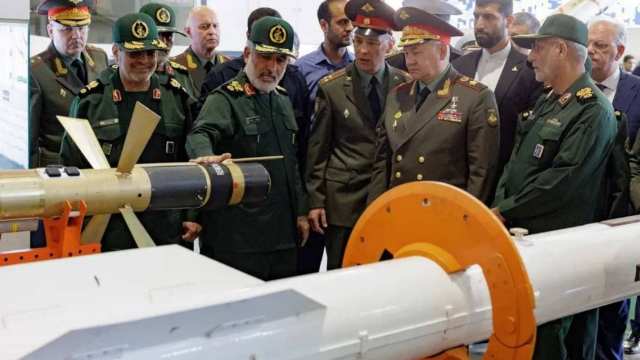According to the official footage of the visit of Russian Defense Minister Sergei SHOIGU to Tehran, the Iranian government showed the guest a curious barrage surface-to-air missile, known in the West only under the index "358". According to experts, this is the first time that the authorities of the Islamic Republic have acknowledged their role in the development of this unusual weapon, samples of which were previously supplied to pro-Iranian forces in Yemen and Iraq.
Shoigu and his entourage saw the Iranian 358 missile at an exhibition dedicated to the developments of the Islamic Revolutionary Guards Corps (IRGC) in the field of unmanned aerial vehicles (UAVs) and air defense. During the event, the high-ranking representative of the Russian Defense Ministry was accompanied by the Commander of the IRGC Aerospace Forces, Brigadier General Amir-Ali Hajizade.
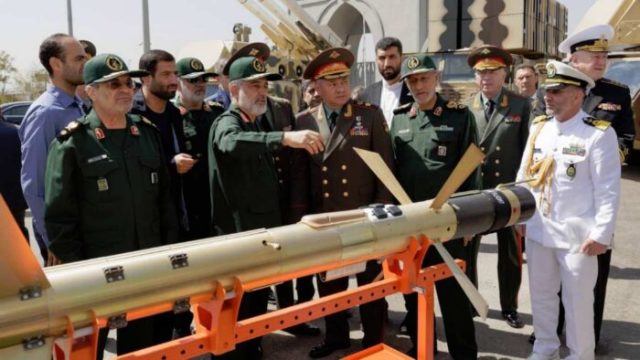
Russian Defense Minister Sergei Shoigu is shown the Iranian 358 missile at the exhibition of developments of the IRGC
According to Western sources, the mention of the 358 product first appeared in 2019 after some similar missiles were seized by the US Navy during operations to stop the supply of weapons and other materiel to Iran-backed Houthi rebels in Yemen. Since then, the United States and its allies have discovered a sufficient number of such missiles when capturing Iranian shipments of weapons bound for Yemen. In 2021, the Iraqi authorities also announced the discovery of at least one of these missiles near the Tuz Khurmatu airbase, located in the northeastern part of the country.
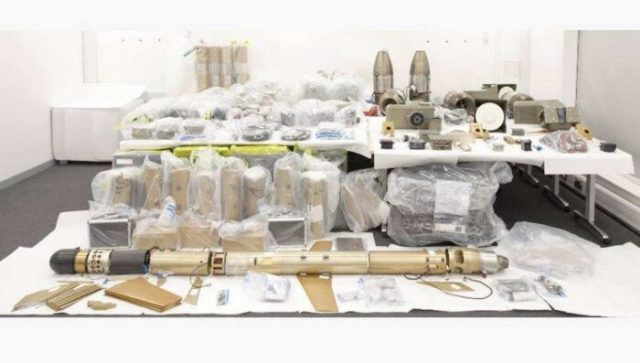
Components of Iranian 358 missiles and other materiel sent to Yemen and intercepted by British forces in 2022
According to sources, the index "358" is presumably taken from the internal cataloging system of the US Armed Forces and/or the American intelligence community for Iranian-made ammunition supplied to the Houthis and possibly other proxy forces. For example, a similar designation, but with the index "351" was received by another Iranian development – the ground-based cruise missile (KR) "Quds-1" the Houthis.
Precise information about the capabilities of the Iranian 358 missile and its operating mode remains limited. It is reported that the length of the product is about nine feet (2.7 m). The main body has a thin cylindrical shape and is equipped with three separate groups of onboard rudders for maneuvering and stabilization in flight.
In the past, US military experts reported that the missile is equipped with an inertial guidance system with satellite navigation, as well as a vertical gyroscope and an air data unit. Many of these components have previously been found on other Iranian UAVs. In the front of the weapon, a "circular collar" is clearly visible, allegedly consisting of infrared sensors, as well as the main guidance system in the nose of the missile.
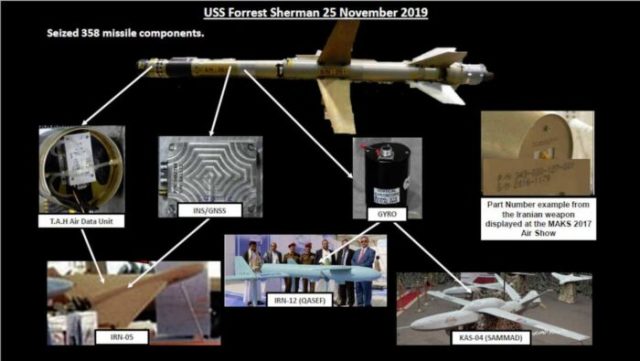
A diagram of the 358 missile and its components, published by the US Central Command (CENTCOM) in 2019. Experts note that the rocket depicted here lacks a third set of rudders located in front.
It is assumed that the product 358 starts from the ground using a solid-fuel rocket accelerator, which is discarded after combustion. The rocket then switches to an air-jet propulsion system (possibly a small turbojet engine) used in a traditional ground-based or anti-ship missile system. Along the hull at the rear of the rocket, air intakes molded into the shape of the propulsion section are visible.
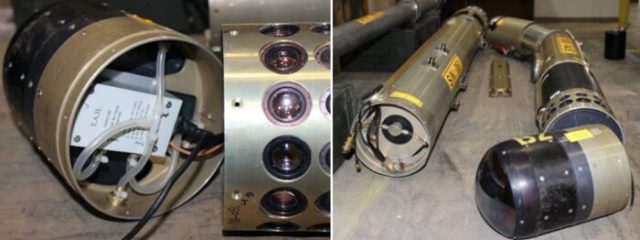
Close-ups of some components of the 358 rocket, including the infrared sensor array
However, the ring of infrared sensors is more similar to the features often found on surface-to-air and air-to-air missiles, which are used to activate the weapon's warhead in close proximity to the target. Missiles of this type are usually not cruise missiles and develop much higher speeds than a conventional air-jet propulsion system can provide. As a result, US experts have long evaluated the 358 product as an extremely unusual means of air defense.

Showing Russian Defense Minister Sergei Shoigu the Iranian ground-based missile defense system
Earlier it was noted that in addition to its basic design, the 358 differs even more from typical surface-to-air missiles in that it is apparently designed to fly at low speed to a given area, and then stay there until the fuel runs out. According to the New York Times, citing unnamed US military officials back in 2020, "weapons fly according to the figure of eight scheme and look for targets."
Exactly how the 358 missile detects and tracks its targets is not clear. The New York Times article mentioned above stated that the ring of weapon sensors is designed to overcome the existing means of countering anti-aircraft missiles with infrared guidance, namely: directional infrared counteraction systems and decoy missiles. Based on this assumption, it is assumed that the Iranian missile has the capability of homing.
However, experts argue, it is not clear on the basis of what such a conclusion is made or how such equipment would overcome countermeasures. If two rows of sensors are redundant, but operate at different wavelengths, this could help reduce the mutual influence of different types of countermeasures on the munition. It is also possible that one row consists of infrared sensors as part of guidance systems, and the other consists of laser sensors of a non–contact fuse, similar to those installed on many traditional SPS and air-to-air missiles. Another possibility is that an array of "collars" or at least one row of such sensors initially detects a potential target, and then directs the main sensor located in the nose compartment to this target in order to recognize it and carry out an attack, if justified.
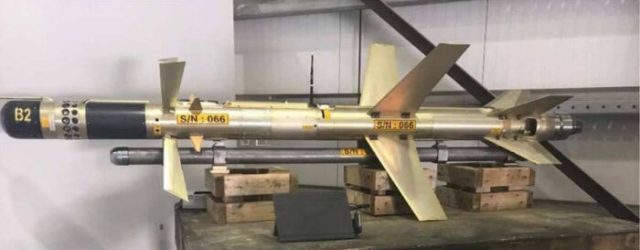
General view of the Iranian missile 358
It is assumed that there may be several versions of the 358, including those that use some form of passive homing and/or that can receive updates from onboard sensors. At least one well-known example, shown above, has a particularly prominent antenna on the rear panel, which could provide some level of basic semi-autonomous control.
In general, experts think, the viability of this concept remains an open question. The low speed of the missile already means that it is useless for hitting fast-flying combat aircraft in many scenarios and is better suited for attempts to intercept slower targets such as helicopters and UAVs.
To date, there is no convincing evidence that the 358th shot down anything, despite reports that such attempts were made. According to a 2020 New York Times report, "a U.S. military official stated that Iranian 358 missiles were fired at American drones flying in Yemeni airspace."
Iran-backed Houthi rebels have succeeded in shooting down U.S. and Saudi drones over Yemen using traditional surface-to-air missiles. The group also claimed that over the years, various factory and homemade air defense systems have hit several combat aircraft belonging to the Saudi-led coalition, including Saudi F-15 and Tornado fighters.
Nevertheless, experts conclude, the concept underlying the Iranian 358 missile is very intriguing. If the weapon works as described, it could be sent to advanced areas where UAVs or helicopters are expected or expected to fly. The missile could track and hit them without any need for additional advanced onboard sensors. This can be especially useful for defeating approaching drones, which are difficult to detect and destroy with traditional air defense systems.
In addition to all this, groups of 358s, barraging in orbits in the form of an eight, would simply pose additional dangers that the enemy would have to fight or try to plan their circumvention, which could become problematic, given that they can be sent to remote areas. If the 358 is inexpensive, then it may be easier to deploy a large number of them at the same time to increase the likelihood of success and otherwise try to disrupt enemy air operations.
It seems that the use of 358 missiles also does not require much logistical support. When the Iraqi authorities captured the 358th in 2021, they also found a simple launcher consisting of a rough rail attached to a base burdened with cinder blocks.
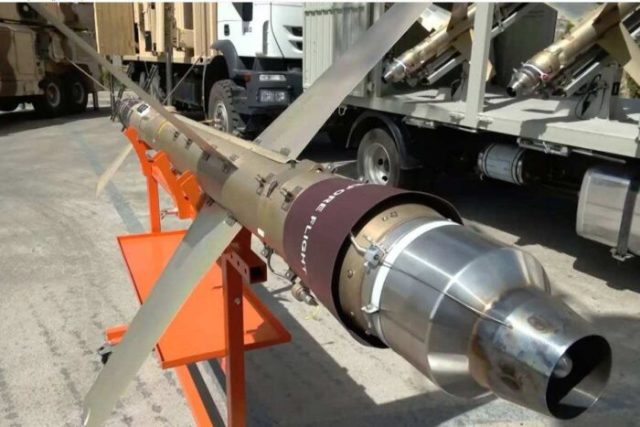
358 missiles, including two loaded on a truck-based PU
At the IRGC exhibition, which S. Shoigu visited, observers noticed a pair of 358 missiles on launch rails installed in the back of a truck. This launcher system looks like it is deliberately designed to look like any other commercial vehicle, helping to reduce vulnerability and add flexibility. Although the very idea of disguising as an ordinary vehicle is not new.
At least, it is emphasized that now Tehran has publicly acknowledged the presence of the 358 missile, and additional information about it is expected to appear.
According to the materials of the resource thedrive.com/the-war-zone
